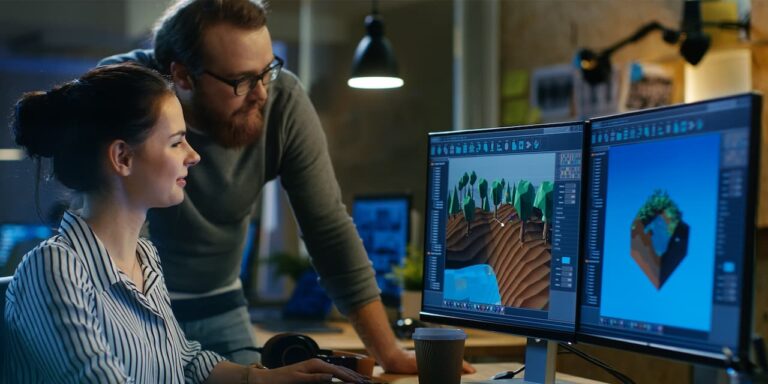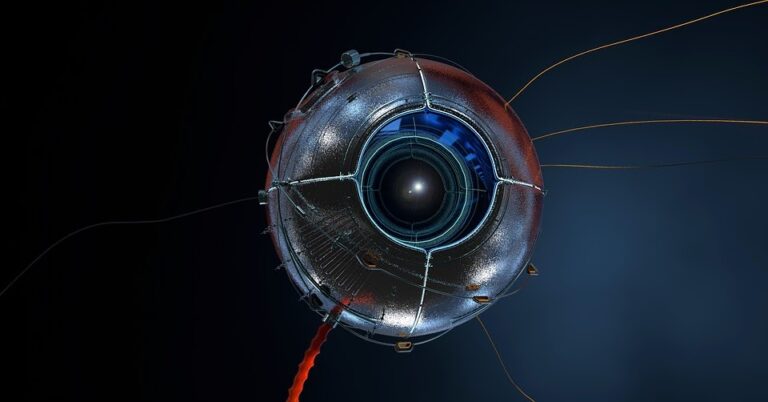Today, 3D modeling is a smart career option. Professionals from all around the world are opting for it as their primary job. However, many people still don’t know what exactly a 3D artist does? The role of a 3D Modeler is to create realistic images, which often tend to be virtualized real-life scenarios. A modeler has to develop models from scratch and also can work on updating the existing ones. To achieve this, one must have the right amount of creativity and technical knowledge to ensure quality output within a restricted time frame.
It would not be wrong to say that a modeler plays a vital role in any visual production line, whether related to films, games, etc. However, if you’re willing to take it as a serious career option, then you need to learn some of the critical factors that will decide whether 3D modeling can be helpful or not for you.
3D Modeler: A short video by Fajar Kristianto describes how he became an expert 3d modeler & founder of Kecubung Raya CG. It also shows the steps on how he draws his idea into reality with a complete digital art process in Blender 2.49
What are the benefits of becoming a 3D modeler?
The perks associated with this job are far too many. People who have already taken up this profession can tell you about this for sure! However, there are also some of the primary benefits that you need to know about, which are mentioned below:
1. Extensive knowledge: The necessary skills that one requires to become a 3D modeler are extensive. Apart from knowing how to use specific software like Maya, Cinema 4D, Blender, etc. It would help if you also had proficiency in animation techniques and scripting languages like Python or Houdini for procedural modeling.
2. Excellent Artistic Skills: An artist needs to be very skilled at their work because they have to create life-like models and ensure that all the textures used on them reflect reality even better than the original object itself. For this purpose, individuals must enhance their artistic abilities with knowledge of anatomy, perspective, light sources, etc.
3. Flexible personality: A 3D modeler is required to work in teams with artists, animators, and even designers, so they have to be very flexible about their nature to mingle with everyone easily. They are also required to accept criticism from other team members, which often results in positive outcomes of the work being done. After all, if no one offers any suggestions, then how will the individuality of a project ever get enhanced?
4. Sense of space & scale: Since 3D modeling deals with the virtualization of objects into the environment, it would only make sense that the person doing this job must understand space and scale while working on them. A 3D artist needs to know how a particular object will look in a natural world setting, so they must have a deep understanding of its scale and dimensions.
5. Good eye for detail: This is another essential factor in becoming an efficient 3D modeler. Apart from creating a realistic-looking object, the person in charge also needs to define every tiny element with precision. Nothing seems out of place upon implementation into the environment. They need to pay close attention to the minute details while creating models, which sometimes can help bring their creations up by several notches!
6. Awareness about tools & techniques: In this industry, the amount of expertise required usually follows an increase in demand for quality output within a restricted time frame. This means that for a modeler to survive in this market, they cannot afford to be ignorant of the tools and techniques required to work faster. So, for example, when people come across a Golaem Crowd tutorial video on YouTube or even read about it somewhere else, they feel motivated enough to do their research about what other tools are available out there so that they can become efficient. At their job, even more!
7. Good knowledge of anatomy & lighting: Of course, you cannot forget the importance of sound knowledge in these two critical areas because no matter how much you excel in skillfully creating objects, if your character looks too goofy, then nobody will spare them even a second glance!
8. Flexibility with working hours: Many people are under the impression that working in this industry means you have to sit in front of your computer screen for more than 12 hours a day. However, occasional deadlines need to be met urgently, so some flexibility is required when it comes to the timings involved. But keep in mind that there are also specific fields within 3D modeling where an individual can work from home. Still, then again, creativity must not suffer because of that otherwise, it’s counterproductive!
The points mentioned above clearly explain why becoming a 3D modeler can be very rewarding financially and personally. This job requires dedication and determination but, once mastered, has the potential of opening up several doors for you all over the world! If interested, check out online courses on Blender 3D modeling; they are sure to help you improve yourself.
Can I learn 3D modeling entirely from home?
To become a professional 3D modeler, it is essential that you first have a clear understanding of what exactly this job entails. This means that if you are thinking of becoming a freelancer, you can easily do so without going through any formal training. Still, those who wish to be employed by the industry must have completed their graduation in BFA or equivalent subjects and should ideally possess knowledge about some other computer graphics software that most companies usually require as part of the recruitment process. Apart from all this, an individual should also have extensive knowledge about tools & techniques related to 3D modeling, of course!
There are specific online courses that can help you learn 3D modeling entirely from home, but it all depends upon your determination and how efficiently you impart the acquired knowledge.








